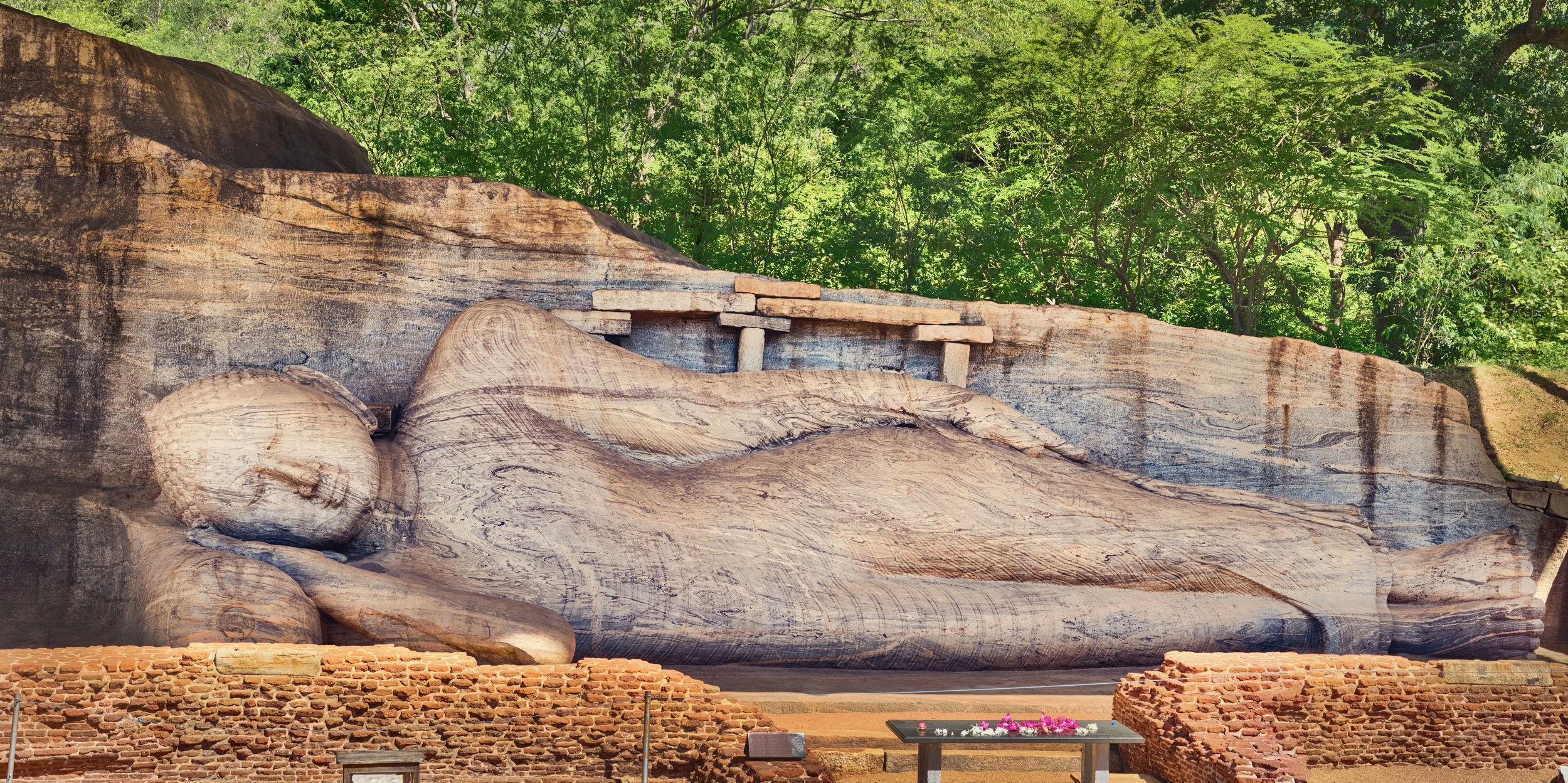Gal Vihara
At a Glance
Here, in the ancient city of Polonnaruwa, are four rock relief statues of the Buddha, carved into a large granite rock face dating back to the 12th century. These beautiful carvings are among the best examples of ancient Sinhalese sculpting and carving arts.
The Story
Gal Vihara was originally named Uttararama "the northern monastery". It is situated in the ancient city of Polonnaruwa in the North Central Province of Sri Lanka. The complex was carved during the 12th century CE under the orders of King Parakramabahu I.
The central feature is four rock relief statues of the Buddha, carved into a large granite rockface. As pilgrims we encounter a large seated figure, another smaller seated figure inside an artificial cave, a standing Buddha figure and a reclining figure representing the parinirvana. These Buddha statues are among the best examples of ancient Sinhalese sculpting and carving arts. Thus Gal Vihara is one of the most visited monument at Polonnaruwa. As pilgrims, when we gaze on these granite images, we can imagine them as they were created, covered in gold.
The unusual standing image with his hands crossed over his chest has often popularly been interpreted as the Buddha’s disciple, Ananda, grieving over the Buddha’s loss. However, scholars note that this mudra instead represents the Buddha paying homage to the bodhi tree during the third week after his enlightenment. As we pilgrims visit this statue, then, we can consider our visit to the Sri Maha Bodhi as well, and recall the Buddha’s own reverential attitude to the site of his awakening.
Originally, each large statue seems to have been enclosed by its own image house, as indicated by the remains of brick walls at the site. Archaeologists also have generally agreed that the walls around the statues were covered with colorful frescoes.
King Parakramabahu I convened a council of a congregation of monks at the Uttararama to purify the Buddhist monastic, and later surpervised the elders’ agreement on a katikavata "code of conduct" for the sangha. This code of conduct was then recorded in an inscription on same rock face. Thus, as pilgrims, we can also take a moment to recall the importance of regular monastic meetings to protect and maintain the Dharma that still benefits us to this day.
Coordinates: 7° 57′ 57.17″ N, 81° 0′ 17.89″ E

